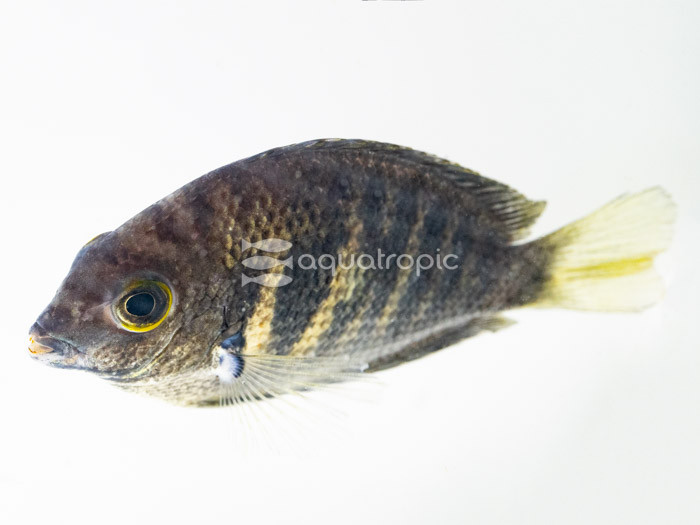Canara Pearlspot (Etroplus canarensis)

The Canara Pearlspot (Etroplus canarensis) is a cichlid of limited range, being found only in the freshwater waterways of South-West India. For this reason, it rarely enters the aquarium trade in western countries, so when it does, there’s a sizable amount of excitement and buzz amongst collectors. It’s more challenging to locate than others in the Etropius genus as it’s found in freshwater tributaries far inland and not brackish estuaries like all of the others. Some references have been found that indicate this fish can grow up to 8” (~20cm), but most aquarium specimens will top out at 4” (~10cm).
This fish is somewhat cryptic for a cichlid, preferring to hide amongst rocks and bog-wood, feeding along them for scraps of food and mostly filamentous algae that have settled there. Due to this, you’ll want a mature aquarium that simulates the high flow, oxygen-rich environment in their natural habitat. It will initially be challenging to get them to associate humans with food. For this reason it’s important to keep them with like species that won’t bully them back into their territory, causing a retreat to be with the rest of their shoal. As mentioned before they need non-boisterous tank mates, some suggested candidates include; Melon Barbs (Haludaria fasciata), Mascara Barbs (Rasbora dandia), Mahecola Barbs (Puntius mahecola), Malabar Danio (Devario malabaricus) and even larger carp like Jerdon’s (Hypselobarbus jerdoni) among others. Once they get comfortable, you can try the typical fare such as sinking pellets, blood worms, tubifex worms and even brine shrimp.
Unless they have paired for spawning, the Canara Pearlspot is a very social fish and should be kept as such, groups of 6 or more are recommended. If kept in smaller numbers, severe bullying may occur once a large male has established himself as the leader of the group.
Due to being found in high flow oxygen-rich water, they need to be kept in pristine conditions as they are susceptible to dissolved organics. Due to the fish being a relatively big waste maker, frequent water changes are advised.
They are only compatible with the most resilient and fastest growing of plants. They will eventually begin to feed on plants once they have become more comfortable and adjusted to their set-up. Take note of this and use it to your advantage should you have any individuals go on hunger strikes due to stress.
As you can tell from the recommendations regarding tank mates, this fish is best kept, and to be honest displays best, in a biotopic set up surrounding their needs. To achieve this a larger aquarium with supplemental flow from a powerhead or closed loop pump, in addition to the main filtration. All of this should come along with vigorous aeration. If you are replicating a high flow environment, you’ll want to be careful with the substrate and aquascaping materials. The substrate should not be so oolitic that it never settles, and rocks should be rounded much like they are in the Canara Pearlspots natural habitat. They are worth the extra effort as they make a stunning display for the freshwater cichlid connoisseur.